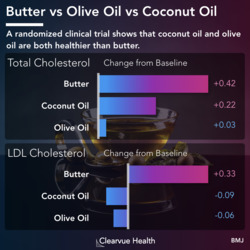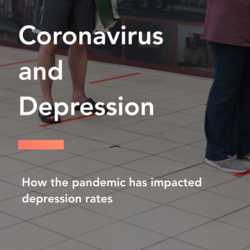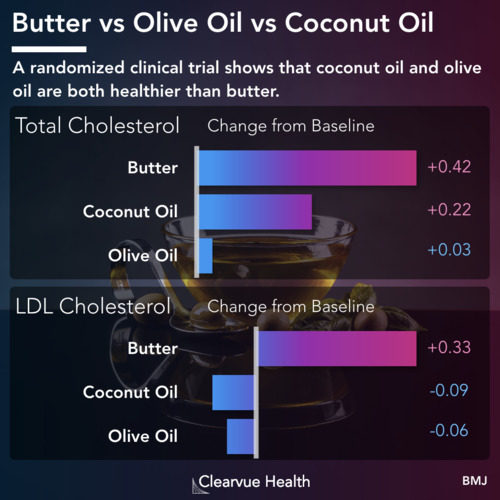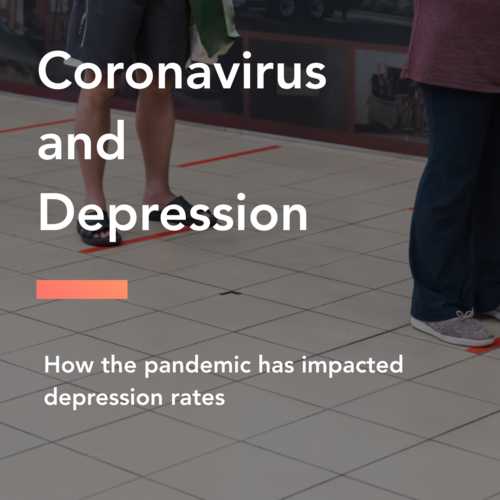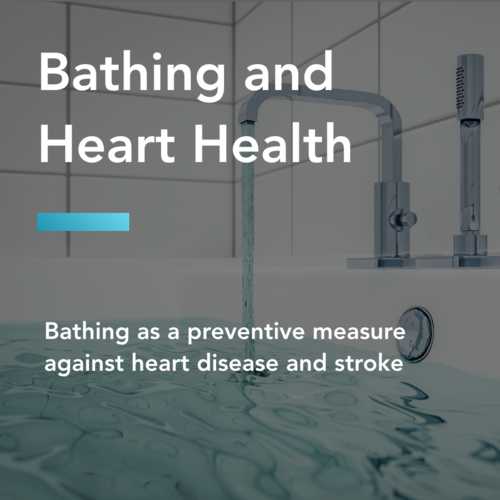Introduction: Multiple Sclerosis
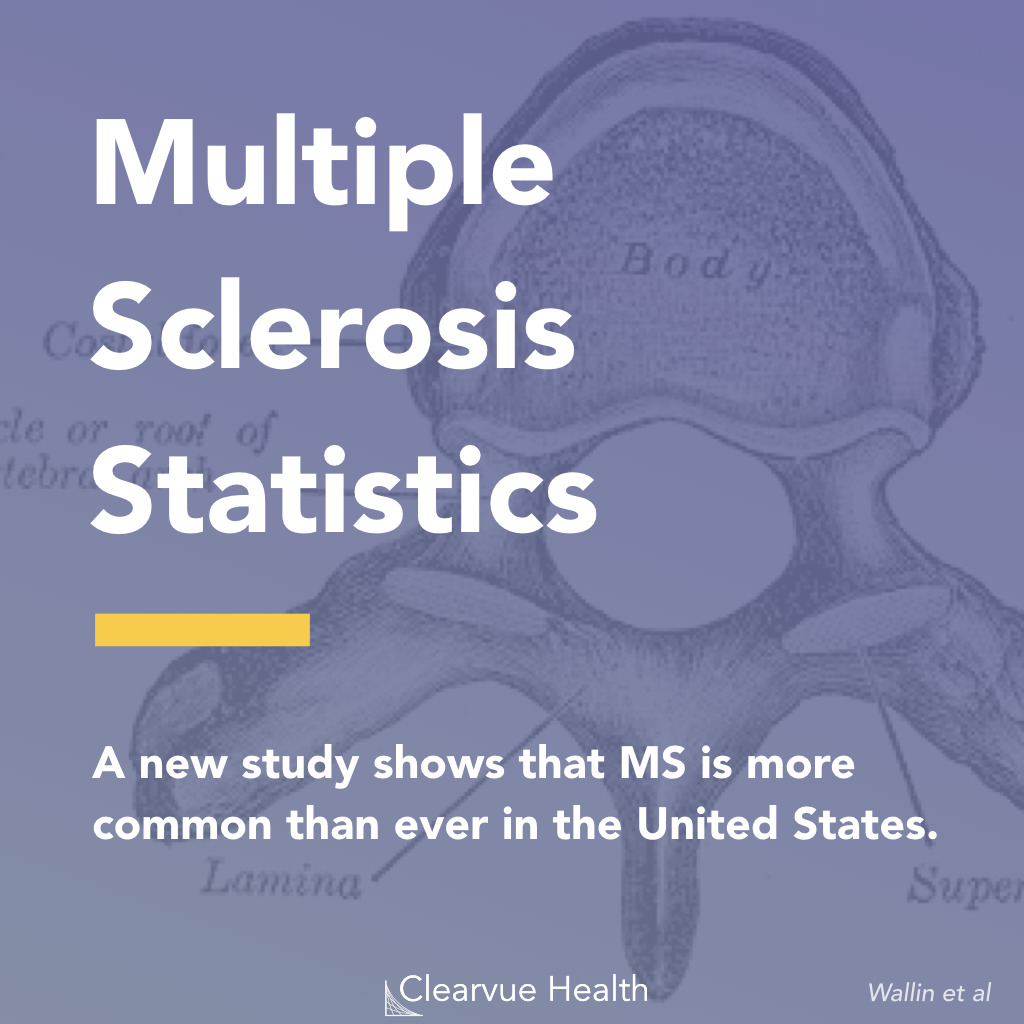
Figure 1: Multiple Sclerosis Statistics. Researchers studied around 125 million Americans to calculate the most precise statistics to date on Multiple Sclerosis.
A new study finds that multiple sclerosis is more common than ever in the United States.
Multiple sclerosis is a type of autoimmune disorder with no known cure. It is caused by the immune system attacking your nerves.
It is as if the wiring in your body loses its installation and covering.
It shows up in unexpected ways, causing some to have a loss of sensation, loss of balance, or loss of strength.
The Most Precise MS Statistics
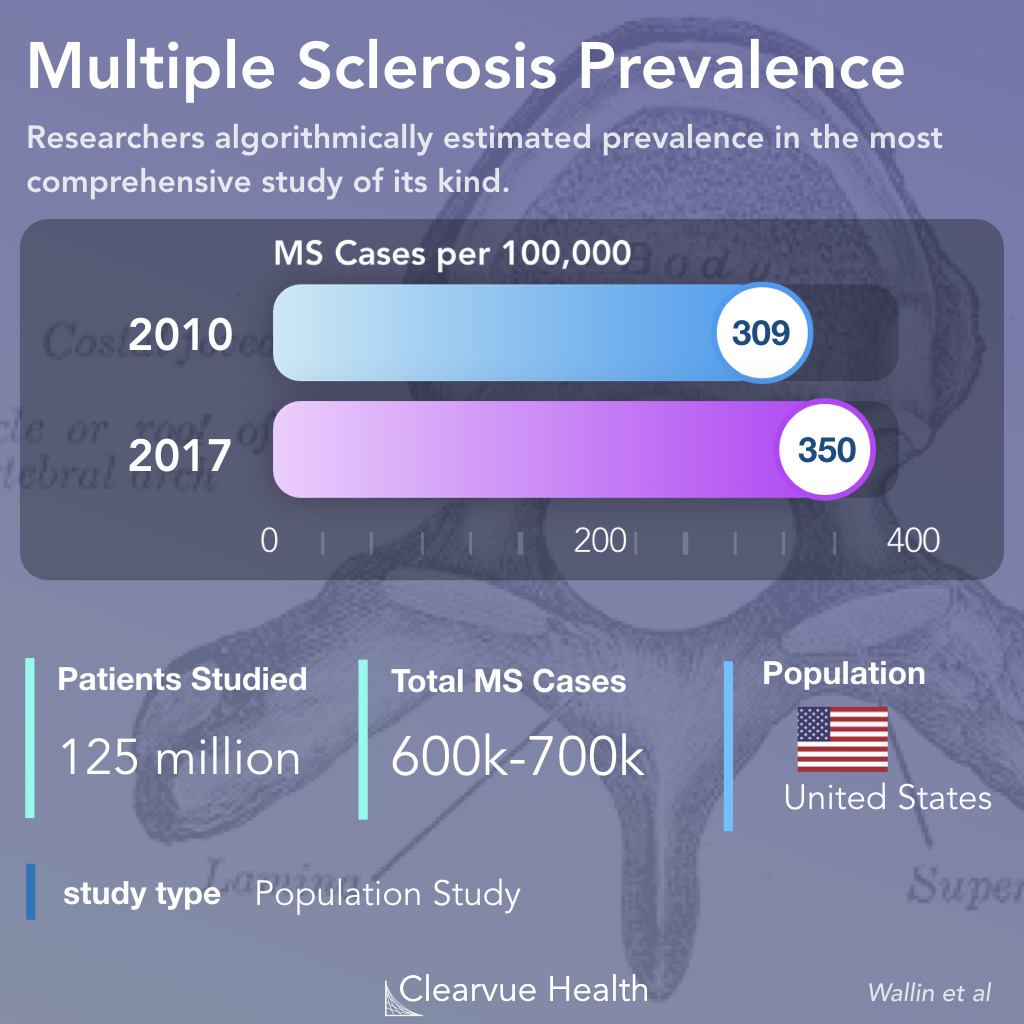
Figure 2: MS Prevalence Estimates. Researchers algorithmically estimated prevalence in the most comprehensive study of its kind. They studied 125 million Americans, among which they found around 600k-700k cases of Multiple Sclerosis.
A research team algorithmically studied medical records of nearly 125,000,000 people in the United States to see how common multiple sclerosis is.
In their research, they provide the highest quality and most comprehensive estimate of multiple sclerosis prevalence.
They found that around 309 out of 100,000 people had multiple sclerosis in 2010 in the United States.
They estimated that this has grown to 350/100,000 by 2017. Within this short interval of seven years, researchers were able to detect a significant change.
Multiple Sclerosis Prevalence is Growing
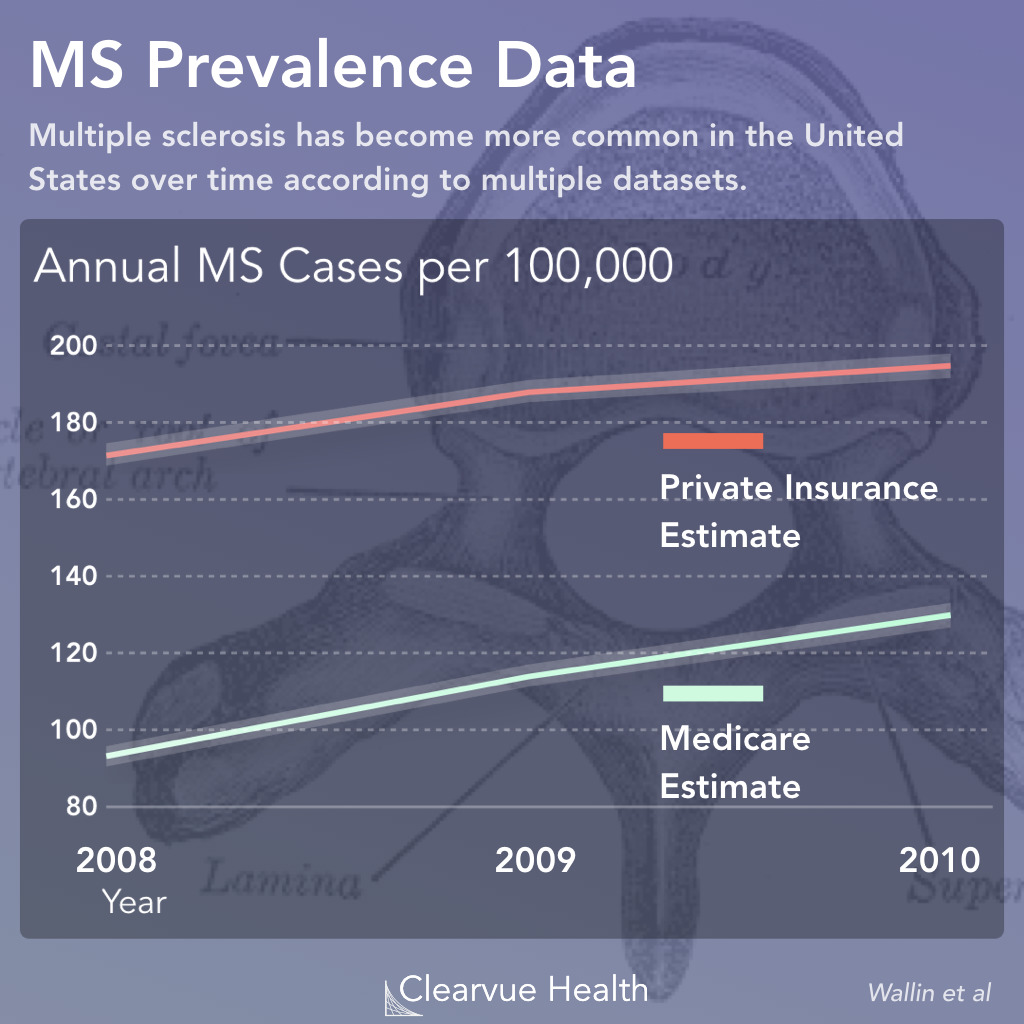
Figure 3: Multiple Sclerosis Prevalence is Growing. Both high-end and low-end estimates of multiple sclerosis show significant growth year-over-year.
They based this estimate off of several databases. The chart above shows high-end estimates on low-end estimates. As you can see, researchers saw year-over-year growth in MS incidence across the board.
The high-end estimate above in red was obtained from a private insurance database from Truven. This may be higher as it includes more patients <65. The lower estimate, in green, comes from Medicare, which typically covers older patients.
Multiple Sclerosis by Age and Gender
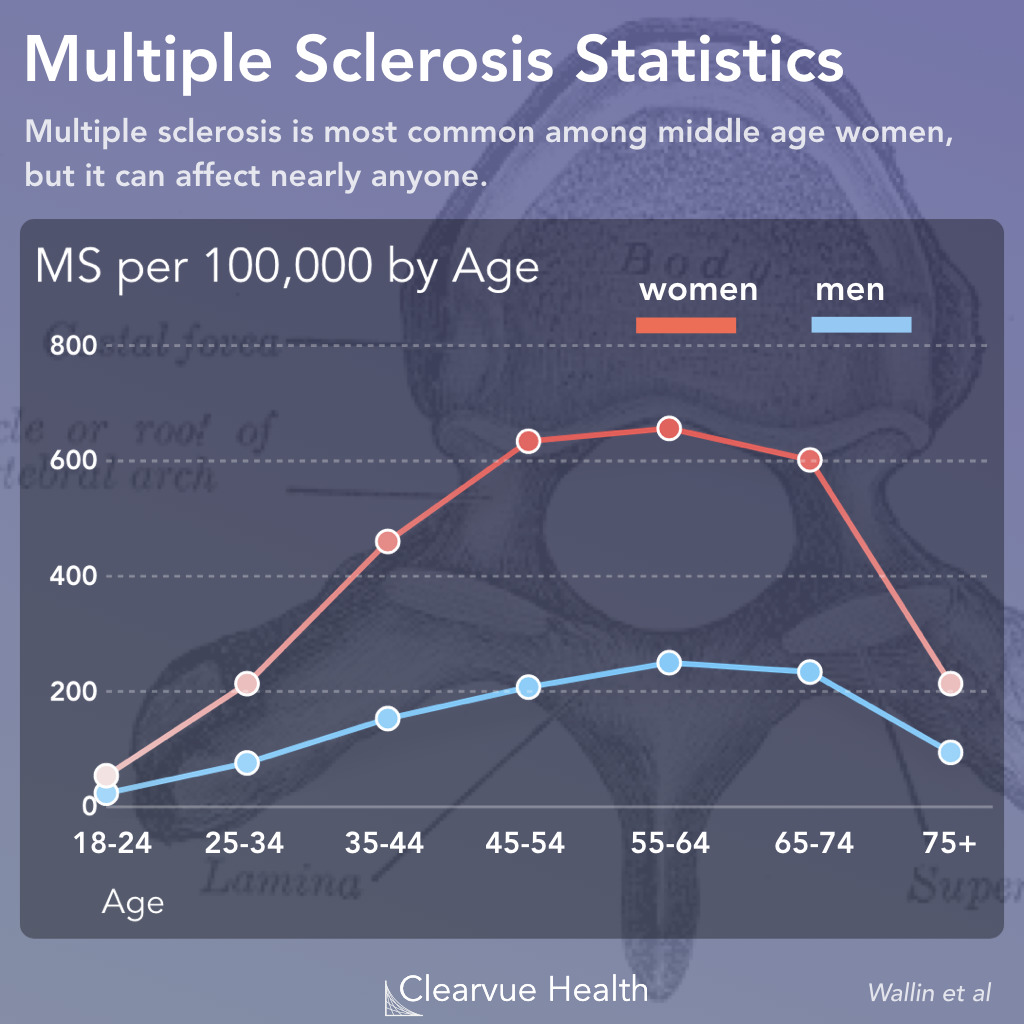
Figure 4: Multiple Sclerosis by Age and Gender. Multiple sclerosis is most common among middle-aged women, but it can affect nearly anyone. The risk in women in men peaks in a person's 50s and 60s. The risk is several times higher in women.
While nearly anyone can get multiple sclerosis, it is most common among middle-aged women. The risk of multiple sclerosis peaks in your 50s before falling off after age 70.
Northerners have a higher risk of Multiple Sclerosis
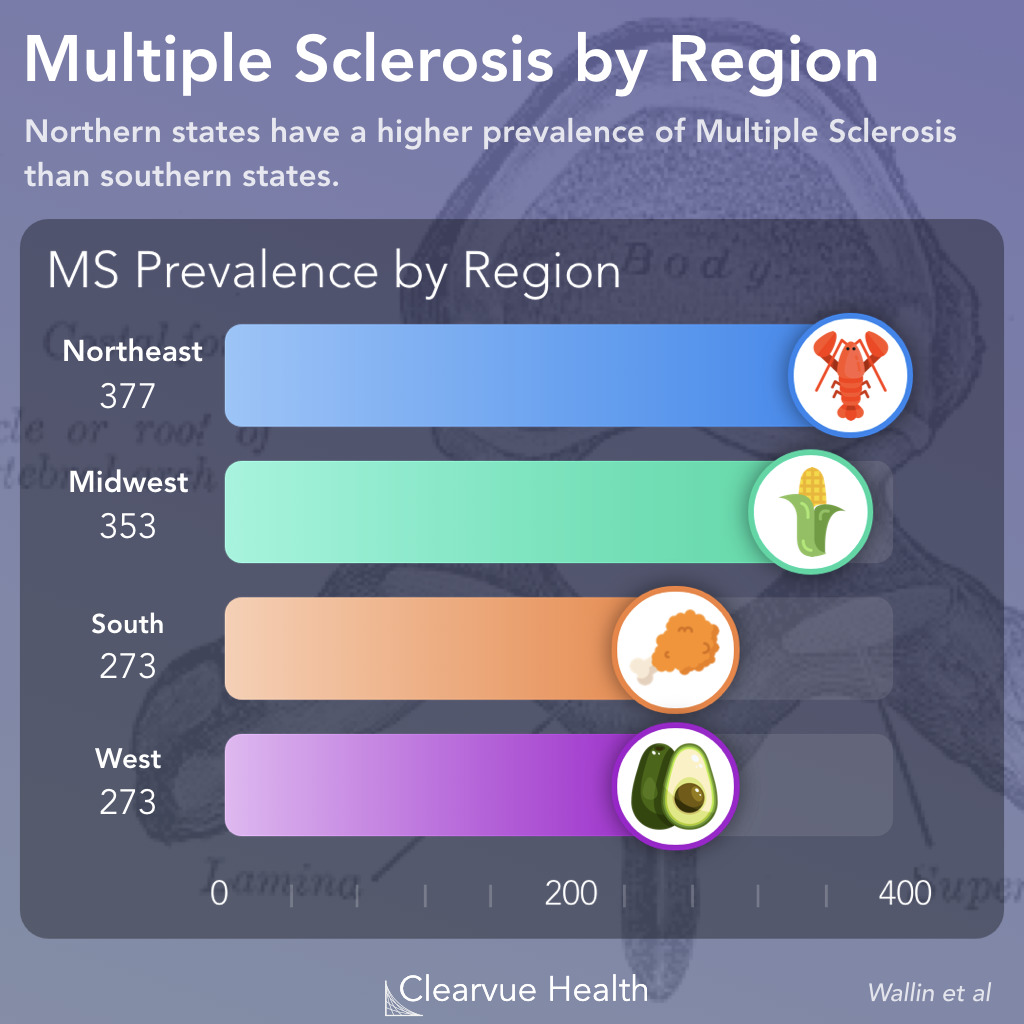
Figure 5: Multiple Sclerosis by State. Individuals living in the Northeast and Midwest have a significantly higher risk of multiple sclerosis than individuals living in the South and the West.
There is a surprising and not fully explained link between multiple sclerosis and where you live.
People who live in more northern states and countries have a higher risk of multiple sclerosis, as shown in the data above.
The reasons behind us are not fully known. One popular theory suggests that this may be driven by differences in vitamin D, which is associated with exposure to sunlight.
Recommendations
Awareness of multiple sclerosis is more important than ever. Multiple sclerosis used to be mostly untreatable, but science is changing that.
While there is still no cure for multiple sclerosis, new treatments may slow or even stop the progression of this disease.
If you suspect that you or a loved one may have multiple sclerosis, be sure to talk to your doctor.





